Breaking down the UK horse racing calendar
Published: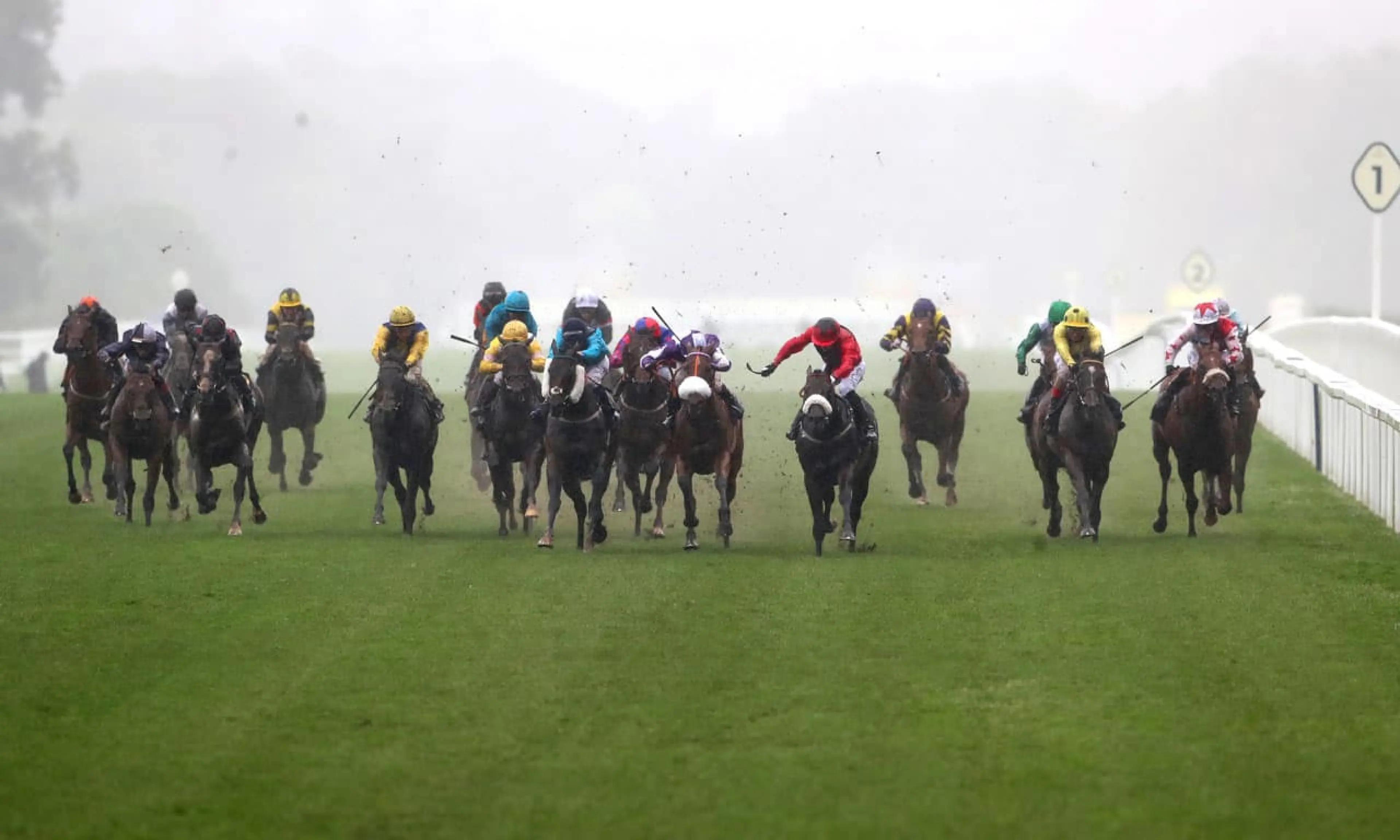
With racing fans looking forward to a full calendar of events in 2022 and hoping for no further Covid-related disruptions, we’ve broken down a typical year in UK horse racing to see when and where the best action is set to occur.
When do the major UK horse racing events take place?
The definition of a major event is open to debate but to identify those that racing fans simply cannot afford to miss, we’ve focused on those at which more than one of the days has been classified as ‘major’ by the British Horseracing Authority (BHA) in their summary of the 2022 calendar.
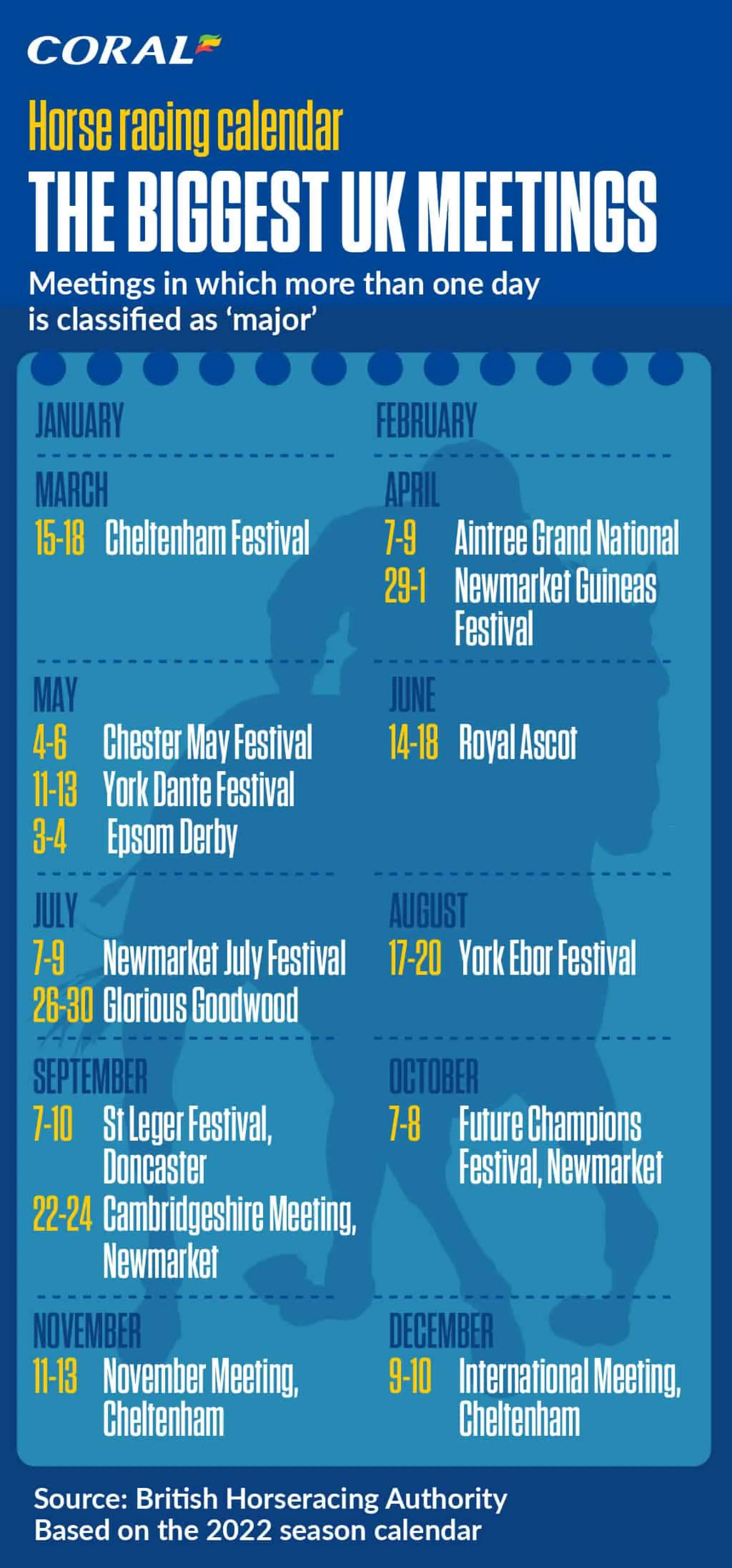
While Cheltenham’s New Year meeting kicks off the season, it’s the advent of the Cheltenham Festival in March that marks the first major event of the year.
All four days of the festival receive this designation, making it the most action-packed event until June.
Attention next turns to three days of the Aintree Festival – headlined by the Grand National – in April before three back-to-back major events starting at the end of the month.
Royal Ascot in June and Glorious Goodwood in July each provide five consecutive major race days as the season reaches its peak.
Moving into mid-August, we have four days of the Yorkshire Ebor Festival and then September brings with it another four-day spectacular as Doncaster hosts the St Leger Meeting.
There are two more events in the year that provide three successive days of major action: the Cambridgeshire Meeting at Newmarket in late September and Cheltenham’s November Meeting.
As we head into the winter, it’s again Cheltenham where the curtain comes down on the season with the International in early December.
When do the UK’s other big horse racing days take place?
There are a wealth of other meetings in which only one day is classified as ‘major’ by the BHA, starting with the aforementioned Cheltenham New Year on January 1st.
In total there are six significant days of racing across January and February before the Cheltenham Festival in March, so plenty for punters to get stuck into before the spring.

Even at the end of the year, UK horse racing continues to offer plenty of days out, with five major days in December alone.
These culminate in the King George VI Chase at Kempton on Boxing Day, followed by the Coral Welsh Grand National at Chepstow the following afternoon.
Holding meetings this late in the year is not without its risks, however, with the latter race rescheduled for the fifth time in a decade in 2020 due to adverse weather.
Which racecourse is the capital of UK racing?
Keeping with the BHA’s definition, we can try to locate the capital of UK horse racing by adding up how many major race days are held at each course.
Interestingly this leads to a three-way tie between the iconic venues of Newmarket, Cheltenham and Ascot, who host 11 each.
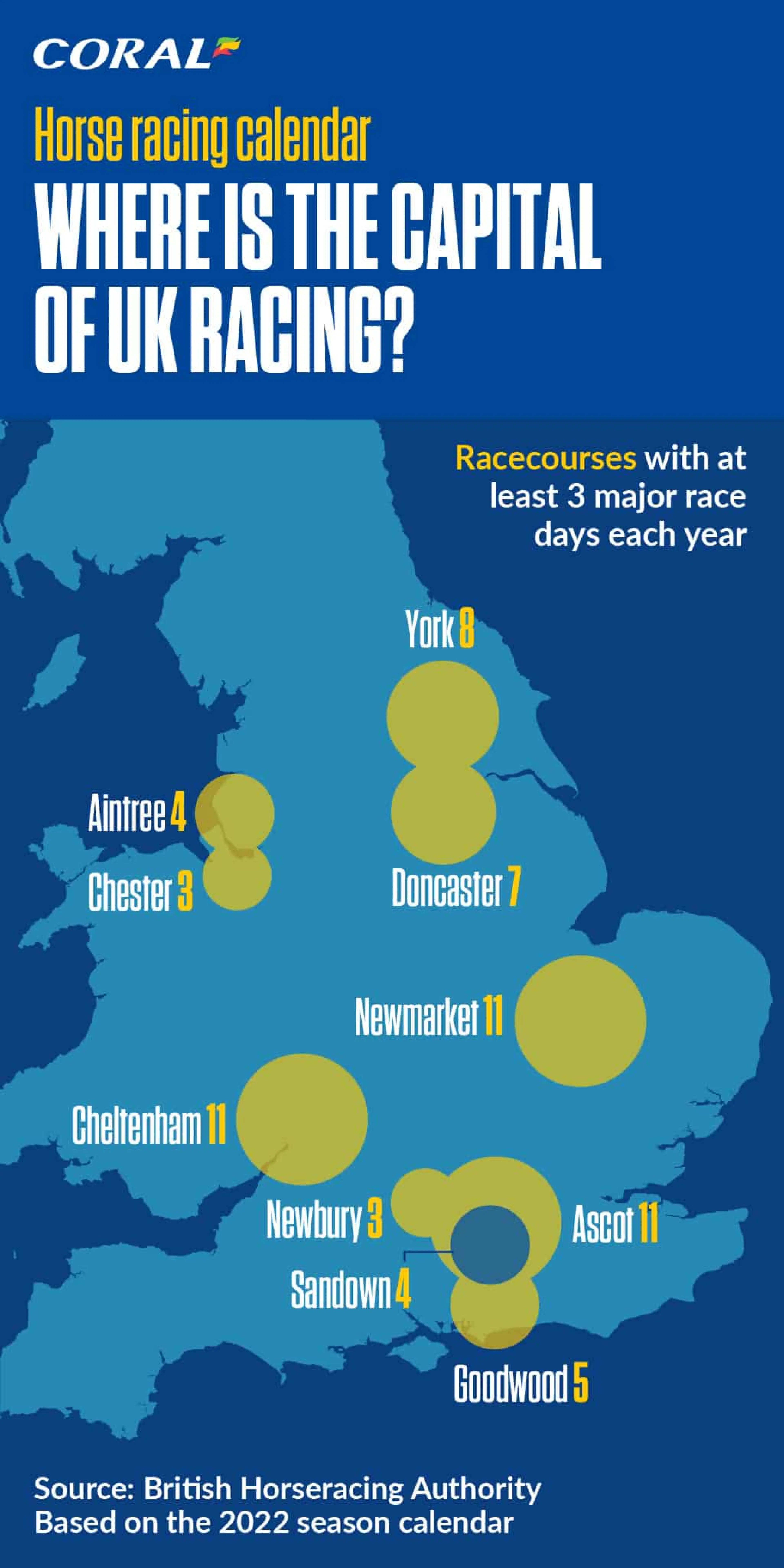
York and Doncaster are the only two other racecourses with more than five major days of racing in a given year, with another five locations featuring three or more.
Where are the best flat races in the UK held?
If you’re a fan of flat racing then there are two racecourses that you need to pay attention to above all others.
Of the 36 Group 1 flat races, which take place between May and October, 13 of them are held at Ascot (more than a third of the total).
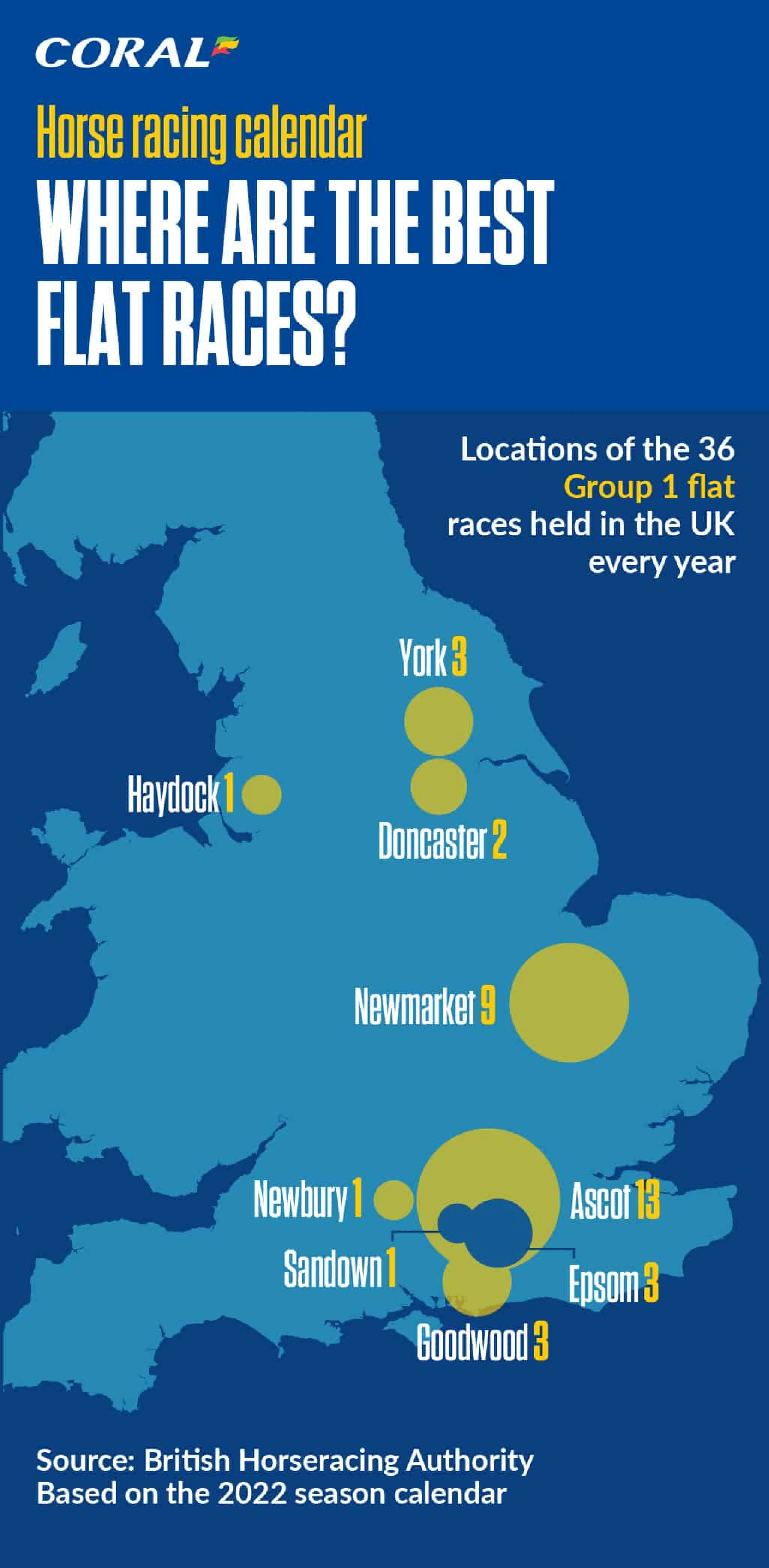
Newmarket is clear in second place, with exactly a quarter of the races. No other racecourse currently hosts more than three races in this category.
Where are the best national hunt races in the UK held?
If jumping is more your thing, then there are also two racecourses which should be central to your yearly planning.
Between them, Cheltenham and Aintree host 25 of the 40 Grade 1 National Hunt races held between November and April every year in the UK.
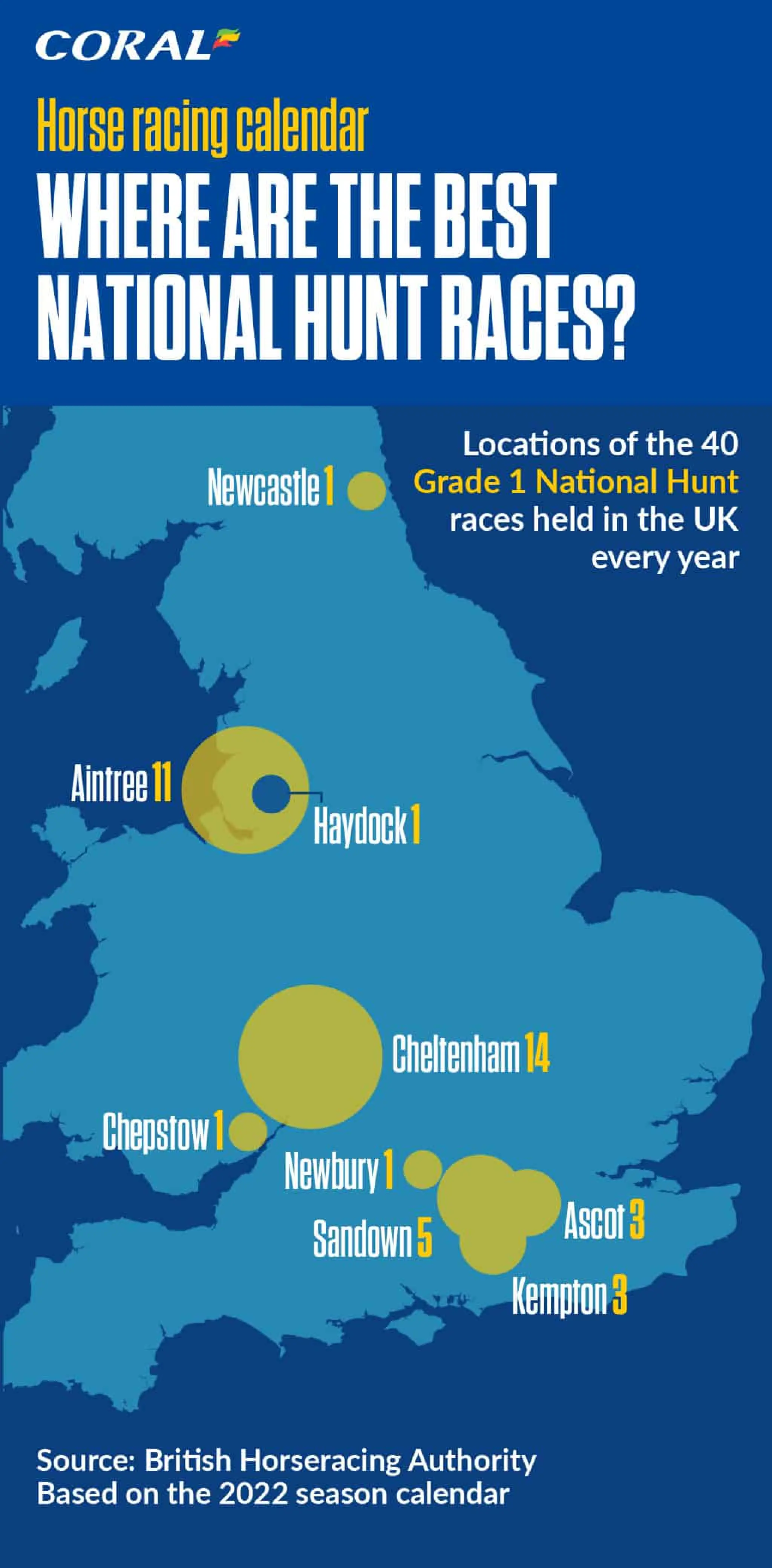
Cheltenham has the edge with 14 races to Aintree’s 11, with no other venue staging more than five.
Which races outside the UK should I look out for?
In addition to UK-based action, there are some major meetings in the international calendar which simply cannot be ignored.
In late March, not long after the Cheltenham Festival, one of the richest races in the world takes place: the Dubai World Cup.
As we approach the summer months, attention turns to the United States’ Triple Crown.
Across May and June the Kentucky Derby, Preakness Stakes and Belmont Stakes form a prestigious trilogy that will command the racing world’s attention.
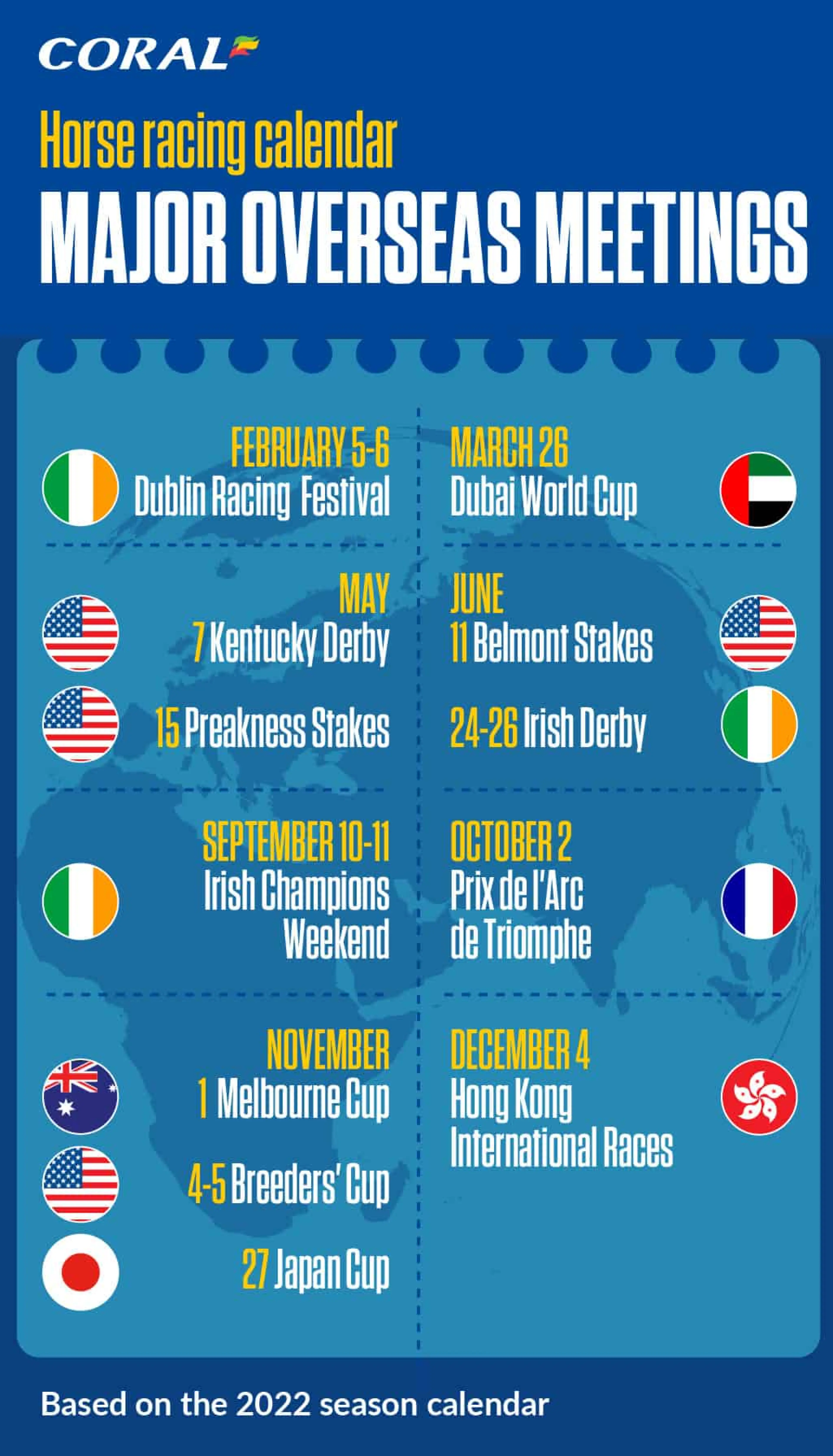
As winter sets in once more, the biggest events are those happening to the East, with Australia’s biggest race – the Melbourne Cup – in early November and then December bringing with it the Hong Kong International Races, which sees the four most prestigious races in the country all happening on the same day.







